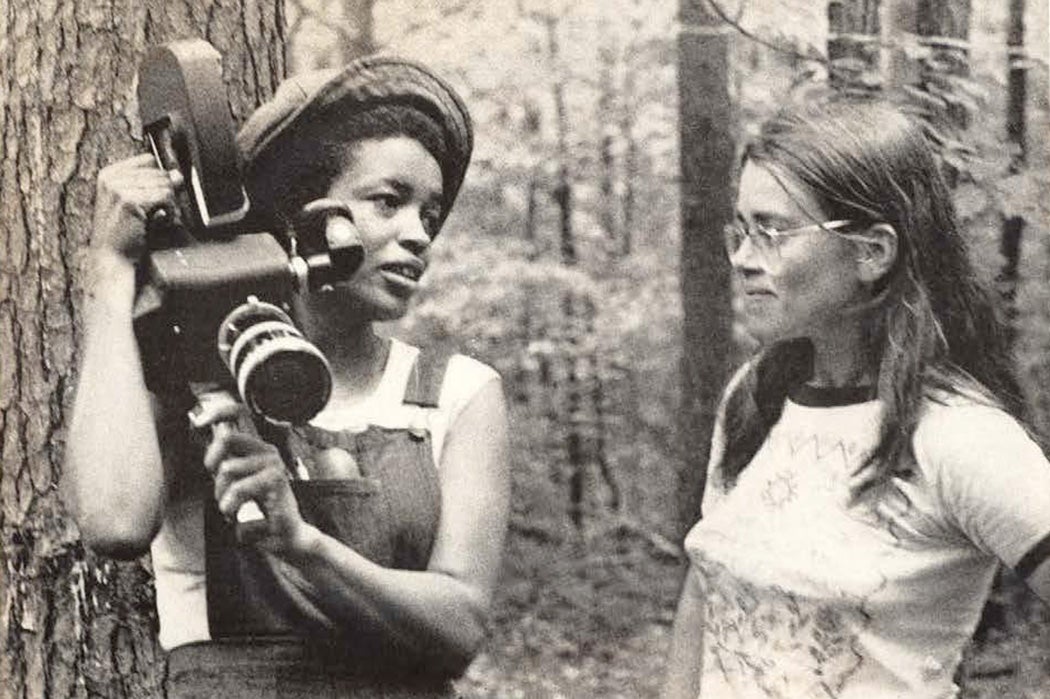“In the world of unionized filmmaking, the normal route of entry is to be a White male with a relative who is a union member. My entree, however, was different.”
Jessie Maple wrote those words in her 1977 book How to Become a Union Camerawoman. She wanted to share her story, she wrote, “as a means of guidance toward helping others get into the union much more easily than I did.” Her road was a difficult one, but it ended with her becoming the first Black woman admitted to the New York camera operators union.
Maple didn’t start out always longing to get involved in filmmaking. She began her working life as a bacteriologist, she told interviewer Audrey T. McCluskey in Black Camera. She left the field to pursue writing. “Without even having any training at the time,” she told McCluskey. “I thought, well, I’m going to be a writer.” Her first writing job was as part of a New York program at the Manhattan Tribune. Though the program lost its funding soon after she was accepted, Maple hung around the offices waiting for her chance to write. She published several stories there before moving to the New York Courier. She loved writing, but “I could feel the communications field luring me. And it seemed that the time was right: the late 1960s, when training programs in communications and other fields were set up solely to recruit Blacks and other minorities.”
In the wake of 1968’s Kerner Commission Report, which cited a lack of Black representation in the media as a concern, Maple would find herself in a world of new creative possibilities. She started working in a training program for Black Journal, one of the many Black public-affairs programs then on the air. At the same time, she began a program with Third World Cinema, which aimed to help marginalized people train for jobs in the film industry. She was the organization’s first woman trainee, graduating from the program in 1973 and becoming a freelance film editor shortly afterward. But she’d had enough of office life.
Weekly Newsletter
“I wanted to be [out there] in the streets,” she told McCluskey, and that meant camerawork. But as she wrote in her book, “I had begun to note a pattern: men dominated this area.” At the time, there were only three women in the camera operators union, and the next test for union entry was in six months. That was all the time she needed. She trained with her husband, who was also a filmmaker, and “went to the rental houses and worked with the cameras five days a week.” She failed at her first attempt at the test, but it wasn’t because of her skills. Her husband had observed the session and suspected there might be an issue with her testing. He noticed that someone tampered with one of the test cameras. When he pointed out the sabotage, Maple was permitted to take the test again, and as Maple writes, “I went through the test so fast everyone was embarrassed. And I passed.”
Jessie Maple worked in television news for several years before starting work on feature films and documentaries. She and her husband later started 20 West, a venue for showing films by filmmakers of color. But it all began with her fight to join the union. As she told McCluskey, “I was glad that I had the opportunity to be independent enough to do these different things and to set an example.”
Support JSTOR Daily! Join our new membership program on Patreon today.







